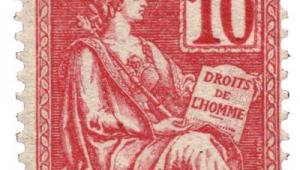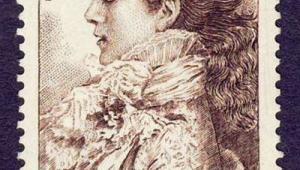Belgium: The soldier king

Of the many definitive sets issued during the 25-year reign of Belgium’s King Albert I, one stands out – not for its longevity (around three years) or its complexity (14 values, with few varieties), but because of its symbolism.
Since acceding to the throne in 1909, Albert had become very popular. He worked for justice and unity within his country, which was threatening to fall apart due to its linguistic divide, and was the first Belgian monarch to take the coronation oath in both French and Flemish.
But he was to ensure the undying admiration of his people for his conduct in World War I.
When Germany demanded passage through Belgium in order to outflank France in 1914, Albert refused. He was famously quoted as having said: ‘I rule a nation, not a road!’
His resistance was futile however, as the Germans invaded Belgium anyway, in a move which was to drag Britain into the war as a guarantor of Belgian neutrality.
Albert took personal command of the army. Although it was driven back to a tiny strip of Belgian soil near the coast, for the next four years he continued to lead his soldiers in the trenches, while Prince Leopold fought in the ranks and Queen Elisabeth served as a frontline nurse.
Throughout this period, the Germans occupied and ravaged most of Belgium. But in 1918 Albert led the final offensive that was to free Belgium, and the royal family received a heroes’ welcome when they returned to Brussels on November 22, 1918.
The new definitive set introduced on July 19, 1919, was striking in depicting the King as a soldier, in field uniform with a tin hat on.
Flanking the image were the poignant dates, ‘1914’ and ‘1918’, completing a simple design that was a tribute to Belgian defiance, and specifically to the monarch’s participation in the war effort.
The design by J de Bast, engraved by H Cheffer, was printed in the Netherlands by Enschedé, because war-ravaged Belgium was not yet capable of producing its own stamps.
Although all 14 values shared the same design, they come in three different sizes. The smallest format was used for the lowest values of 1c and 2c, an intermediate format for the values from 5c to 2f, and a large format for the top values of 5f and 10f.
All the stamps is what is sometimes known as the ‘Tin Hat’ series were line-perforated 11½ as standard, but can also be found with perfs of either 11½ x 11 or 11 x 11½. The top values are known for their imperfect perforation and poor centring, so good copies are at a premium.
The Philatelic Exhibition of 1921 was seized upon as an opportunity to come up with a new definitive set, this time depicting Albert in less military attire. But the ‘Tin Hat’ series would remain valid for a further decade, until April 30, 1931.















